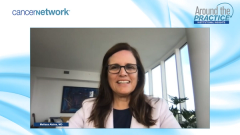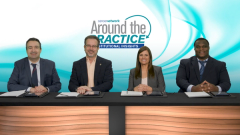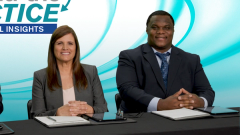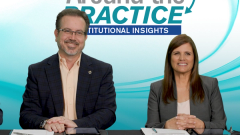
Bispecifics-Based Combination Therapy in Multiple Myeloma
Expert perspectives on the combination of novel bispecific therapies and where they may fit into the treatment paradigm of relapsed/refractory multiple myeloma.
Episodes in this series

Transcript:
Melissa Alsina, MD: How do you foresee these new BiTE [bispecific T-cell engager] facilitators being combined with other therapies we have? Do you see this being used in the first relapse or even up front in newly diagnosed patients?
Rachid Baz, MD: Studies are starting to be done. There was a presentation at ASH [American Society of Hematology Annual Meeting] combining teclistamab with daratumumab-lenalidomide. In general, BCMA bispecifics are likely to induce significant neutropenia as well as an infection risk, so we have to be careful, but we have to do those studies. Talquetamab is a beautiful agent to consider combining because the infection risk seems to be lower. Some of those studies are going to be done in the near future, and we’ll be able to look at those agents not just as single agents but also in combinations. How do we do that safely? In which setting? There’s a rationale to look at those agents in many myeloma settings—smoldering high risk, newly diagnosed, early relapse, etc. Obviously, we’re already doing a study on late relapse. Those agents are likely to revolutionize the field. The combinations are likely going to be explored. We have to be cautious about infection risk, but the future looks very bright.
Ken Shain, MD: I’m going to second that. In myeloma we have new therapies that started in late relapse, and that’s where we study them. Those that are highly effective and safe, and we continue to move them forward. Every time we move them forward, the effects on the myeloma cell and on the patient are dramatically improved, all the way to newly diagnosed [patients]. If you think about where we’re starting with these therapies, that’s what gets all of us excited when we talk about revolution and changing the guard. If they translate the way everything else has, then that’s our expectation. We’ve got to do the studies to find out, to be careful. But that’s why a lot of us are excited. In the case of CAR [chimeric antigen receptor] T-cell therapy, is it going to help us have treatment-free intervals? With bispecifics, that response can be set up front. We’re going to change how we take care of these folks. It’s an exciting time. The next half-decade should be amazing in myeloma care.
Melissa Alsina, MD: Absolutely. The good thing about bispecifics is that even though patients have a high risk of developing toxicities for the initial few doses—they have to be given in an inpatient setting by a team that has experience managing these complications—the risk of complications is very low. These drugs should be able to be given in the community. We need to partner with community oncologists to offer these therapies to our patients because these are continuous therapies. For example, teclistamab is given once a week until disease progression. For patients who don’t live close to our center [Moffitt Cancer Center], it would be a tremendous inconvenience to come once a week to see us. We definitely have to work with community oncologists to administer these therapies in a way that’s more manageable for our patients.
Transcript edited for clarity.
Newsletter
Stay up to date on recent advances in the multidisciplinary approach to cancer.






































































































